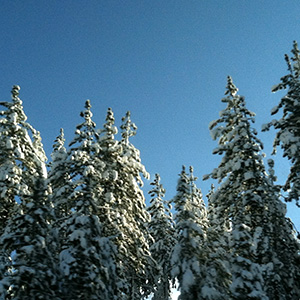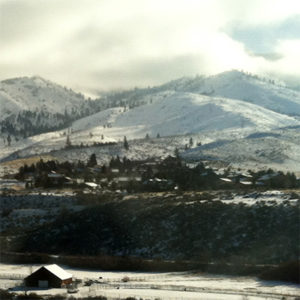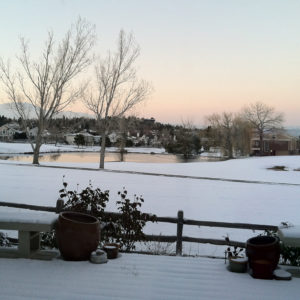


In Gin Sander’s 2016 The Big Bucket List Book, 133 Experiences of a Lifetime, I was referenced three times. # 1 on my bucket list is a handmade pair of shoes – better yet, custom Western boots; #2 ride on a float in a Mardi Gras Parade – which I did four times as a California transplant to the New Orleans Krewe of Tucks; #3 make art – art makes the world smile back at you, it feeds your soul, it anchors you. Not on my top ten list was to take a bus ride through the Sierra Nevada Mountains during the biggest snow drop in 10 years which television news referenced as “life-threatening.” It was not my intension to be there, but I was, on a too long bus ride in a tunnel of white. Off-setting the white knuckle experience was a clearer understanding of white balance.
White-balance (in photography terms) refers to the color of the light source (sun, florescent, incandescent, overcast) and is measured in ‘Kelvin’ temperature which identifies a number related to the warmth or coolness of the light/source. It ranges from 2000K (warm) to 11000K (cool). Example, ‘warm’(red) candlelight 2000K, sunrise/sunset 3000K, ‘daylight’ (RGB) 5500K, and ‘cool’ (blue) deep shade 9000K. When you change the white-balance setting on your camera, you’re adapting your camera to the light source and, in theory, capturing the ‘as seen’ image. A sunny day will appear warmer (lighter) with a lower number setting and a cloudy day will look cooler (darker) with a higher number setting.
On the 2.5 hour bus ride from Sacramento, CA to Reno, NV last week, when we crossed the Sierra summit, I noticed that the giant pine trees cast a blue green shadow on the newly fallen snow. On the four hour trip back, the shadows were obscured by snow drifts. Unlike the new snow of a few days previous, the return snow was hard and malicious. It sat packed on the roadside, piled on the drooping limbs of huge pines, and left dirty and unruly in the path of traffic. Snow, which I always considered white in its purest form, was actually a many layered color story starting with fresh virginal white and spreading its tonal range across everything it touched.
In the mountains there seemed to be no white balance. .. only blinding white. There was so much white that testing every setting gave only the relief of spending time. Resetting the white balance to the ‘cloud icon’ on the camera warmed the shot and seemed to take the threat out of the white. There will probably never be a “snowflake white” setting on the camera because the single falling flake has a lifespan of ‘now’ which evaporates once acknowledged.


